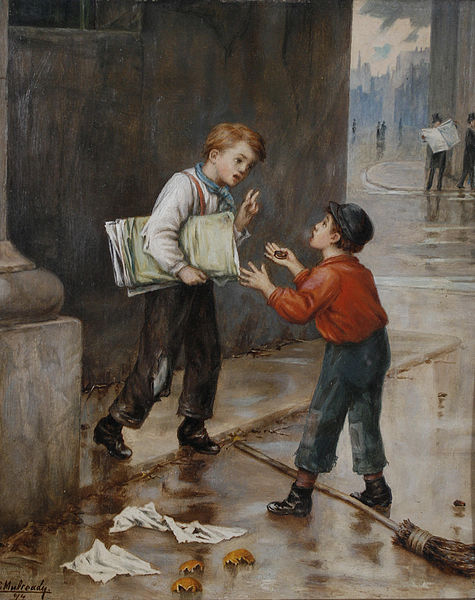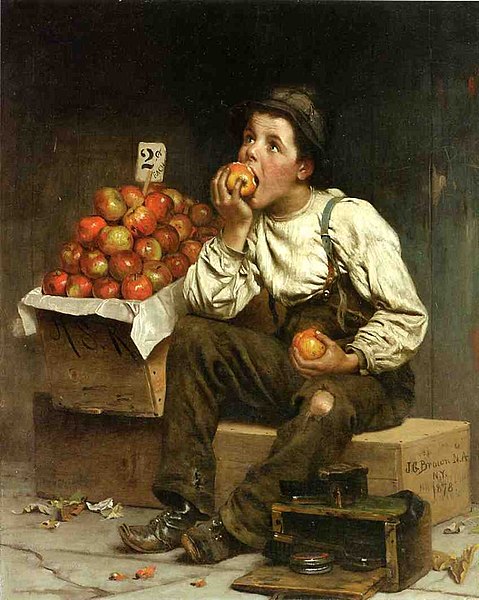
Each 12 June is celebrated as United Nations (UN) World Day Against Child Labour.
The Thammasat University Library collection includes many books about different aspects of child labour.
As the UN website observes,
The COVID-19 health pandemic and the resulting economic and labour market shock are having a huge impact on people’s lives and livelihoods. Unfortunately, children are often the first to suffer. The crisis can push millions of vulnerable children into child labour.
COVID-19: Protect children from child labour, now more than ever
World Day Against Child Labour 2020 focuses on the impact of crisis on child labour. The COVID-19 health pandemic and the resulting economic and labour market shock are having a huge impact on people’s lives and livelihoods. Unfortunately, children are often the first to suffer. The crisis can push millions of vulnerable children into child labour. Already, there are an estimated 152 million children in child labour, 72 million of which are in hazardous work. These children are now at even greater risk of facing circumstances that are even more difficult and working longer hours.
This year, the World Day is conducted as a virtual campaign and is being organized jointly with the Global March Against Child Labour and the International Partnership for Cooperation on Child Labour in Agriculture (IPCCLA) .
A joint International Labour Organization (ILO)-United Nations Children’s Emergency Fund (UNICEF) paper on the impact of COVID-19 on child labour, to be released on 12 June, looks at some of the main channels through which the pandemic is likely to affect progress towards the eradication of child labour.
Combating child labour
Almost one in ten of all children worldwide are in child labour. While the number of children in child labour has declined by 94 million since 2000, the rate of reduction slowed by two-thirds in recent years. Target 8.7 of the UN Sustainable Development Goals calls for an end to child labour in all its forms by 2025. How can the world community get firmly on track toward eliminating child labour?
Prevalence of child labour
Children around the world are routinely engaged in paid and unpaid forms of work that are not harmful to them. However, they are classified as child labourers when they are either too young to work, or are involved in hazardous activities that may compromise their physical, mental, social or educational development. In the least developed countries, slightly more than one in four children (ages 5 to 17) are engaged in labour that is considered detrimental to their health and development.
Africa ranks highest among regions both in the percentage of children in child labour — one-fifth — and the absolute number of children in child labour — 72 million. Asia and the Pacific ranks second highest in both these measures — 7% of all children and 62 million in absolute terms are in child labour in this region.
The Africa and the Asia and the Pacific regions together account for almost nine out of every ten children in child labour worldwide. The remaining child labour population is divided among the Americas (11 million), Europe and Central Asia (6 million), and the Arab States (1 million). In terms of incidence, 5% of children are in child labour in the Americas, 4% in Europe and Central Asia, and 3% in the Arab States.
While the percentage of children in child labour is highest in low-income countries, their numbers are actually greater in middle-income countries. 9% all children in lower-middle-income countries, and 7% of all children in upper-middle-income countries, are in child labour. Statistics on the absolute number of children in child labour in each national income grouping indicate that 84 million children in child labour, accounting for 56% of all those in child labour, actually live in middle-income countries, and an additional 2 million live in high-income countries.
Did you know?
152 million children between the ages of 5-17 were in child labour, almost half them, 73 million, in hazardous child labour.
Almost half (48%) of the victims of child labour were aged 5-11; 28% were 12-14 years old; and 24% were 15-17 years old.
Child labour is concentrated primarily in agriculture (71%) – this includes fishing, forestry, livestock herding and aquaculture – 17% in services; and 12% in the industrial sector, including mining.
COVID-19 impact on child labour
COVID-19 has plunged the world into a crisis of unprecedented scope and scale. The harmful effects of this pandemic will not be distributed equally. They are expected to be most damaging in the poorest countries and in the poorest neighbourhoods, and for those in already disadvantaged or vulnerable situations, such as children in child labour and victims of forced labour and human trafficking, particularly women and girls.
2021 International Year for the Elimination of Child Labour
In July 2019, the General Assembly unanimously adopted a resolution declaring 2021 as the International Year for the Elimination of Child Labour, and has asked the International Labour Organization to take the lead in its implementation. The international year will be an ideal opportunity to reinvigorate efforts to achieve SDG Target 8.7 to end all forms of child labour by 2025.

The International Labour Organization (ILO) has made a detailed study of the COVID-19 impact on child labour and forced labour:
What is the real impact of COVID-19 on child labour and forced labour? How the ILO has repurposed its resources and operations to mitigate the devastating effects of the pandemic? How the international community can contribute to this effort?
Based on an analysis of the most evident effects of COVID-19 on child labour and forced labour, the briefing note presents six urgent interventions aimed to reach around one million vulnerable children, communities and families in 10 countries.
We need to act quickly, together…
COVID-19 has plunged the world into a crisis of unprecedented scope and scale. Undoubtedly, restoring global health remains the first priority, but the strict measures required are resulting in massive economic and social shocks. As lockdown, quarantine, physical distancing and other isolation measures to suppress transmission continue, the global economy has plunged into a recession. The harmful effects of this pandemic will not be distributed equally. They are expected to be most damaging in the poorest countries and in the poorest neighbourhoods, and for those in already disadvantaged or vulnerable situations, such as children in child labour and victims of forced labour and human trafficking, particularly women and girls. These vulnerable groups are more affected by income shocks due to the lack of access to social protection, including health insurance and unemployment benefits. The ILO’s Flagship International Programme on the Elimination of Child Labour and Forced Labour (IPEC+) has ongoing operations in 62 countries, all of which are affected by the COVID-19 pandemic. The programme has developed business continuity plans to mitigate the risks and to repurpose its strategy and is seeking to allocate additional funding to support efforts to monitor the impact of COVID-19 on child labour, forced labour and human trafficking, particularly in relation to school closures, business shut downs, unemployment, the loss of livelihoods in affected communities and a lack of social protection systems.

(All images courtesy of Wikimedia Commons)
